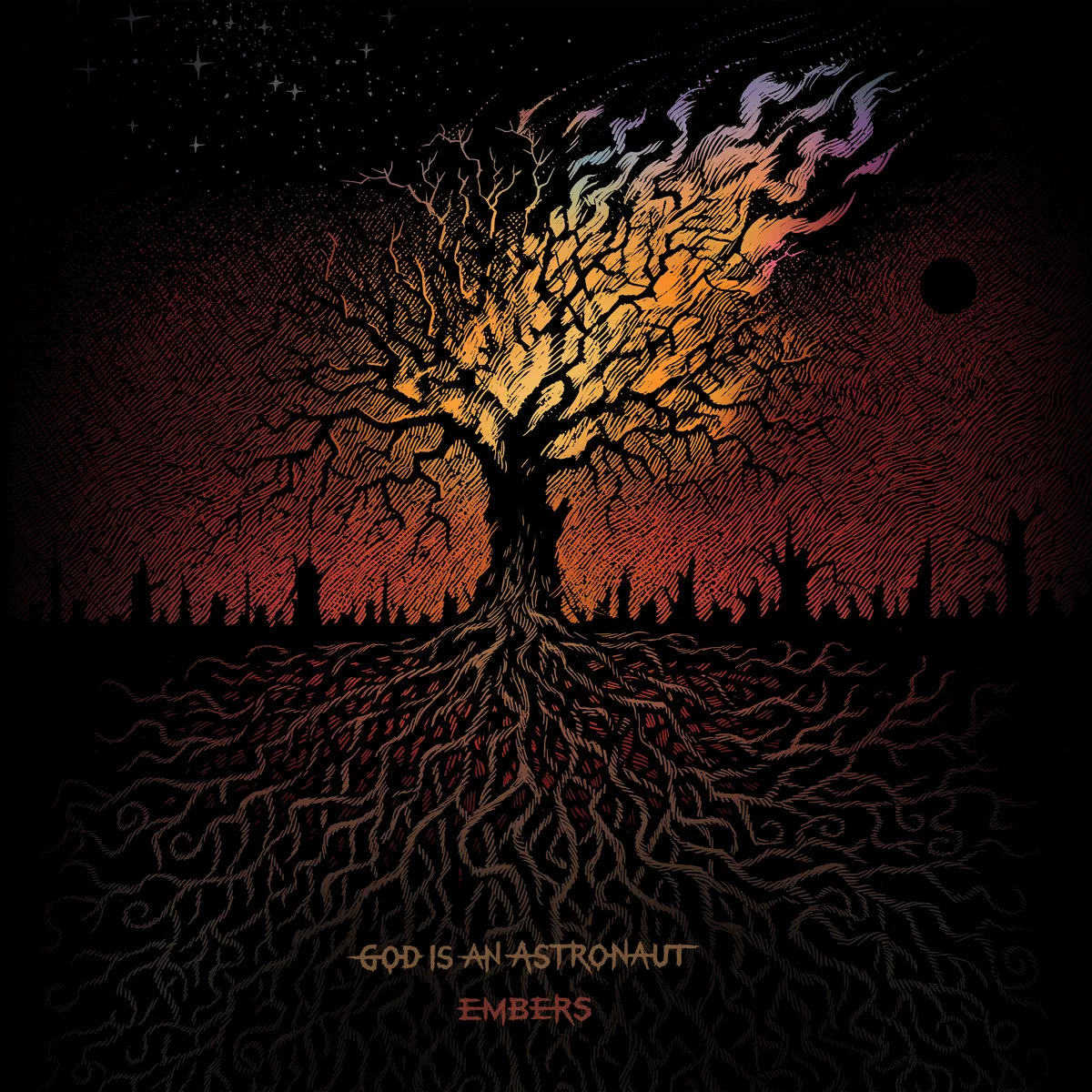Review: God Is An Astronaut – Embers

God Is An Astronaut’s new record “Embers “feels like watching dusk swallow the horizon while stars fight to stay alive. It is music designed for twilight, for the moments when day and night blur and something in the air shifts. Across its nine tracks the irish veterans sculpt soundscapes heavy with grief and hope, carrying scents of sitar, cello, chimes, shamanic drums, all draped over postrock foundations. The album is not modest: it demands space, demands patience, and often rewards both with moments that stretch memory and sting the heart.
From “Apparition” onward the album breathes, as the opener creeps in with airy synths, nearing silence before folding into distant guitar echoes. “Then Falling Leaves” enters like soft lament, cello and sitar weaving through patterns of loss. “Odyssey” feels larger, wider, epic; guitars ascend and fall, rhythms pulse as though heartbeats, piano and strings both soothe and call. The title track, long and restless, takes no shortcuts: drums churn, guitars shimmer, atmosphere swells. “Realms” or “Prism” grant a quieter sanctuary, allowing trembling cello or bowed psaltery to guide breath between storms. The final “Hourglass” closes with piano suffused in sunset tones, a farewell, a settling of dust.
The production here shines. Every instrument has weight: drums hit with palpable presence; ambient synths and strings occupy space without smothering. The mix gives room to breathe, to let tension build and release. There are moments where the album’s scope almost overwhelms its intimacy, where the long build feels stretched, where you wish some passages were pruned tighter to sharpen impact.
What holds “Embers” back from being higher is its occasional overreach. Some songs chew too long on atmosphere before giving descent into melody or punch. The spine of the record is strong in peaks, but the quieter transitions sometimes lose focus, becoming gloss rather than contrast. Also, while the instrumental richness is impressive, there are moments when absence of lyrics means emotional signposts are carried only by tone; listeners deeply attuned will catch it, others may find parts drifting.
Yet these are margins. The album succeeds most when scale and tenderness collide. There are songs where sorrow becomes beauty, where instrumental voices cry without words, where dense textures open a space for reflection. “Embers” does what postrock does best: not only evoke landscapes but invite you to inhabit them. It isn’t content to merely sound pretty; often it pushes toward catharsis, toward letting the listener feel as much as hear.
In summary “Embers” is a bold, immersive album. It sometimes languishes, sometimes leans toward too much atmosphere without payoff, but for the most part it delivers something more than comfort: it delivers emotional gravity, cinematic vistas, beautiful darkness. For fans who want their instrumental music expansive, textured, capable of both storm and calm, this is a record that deserves time.